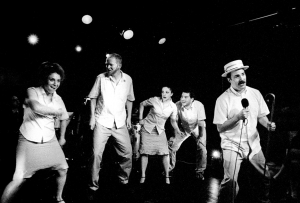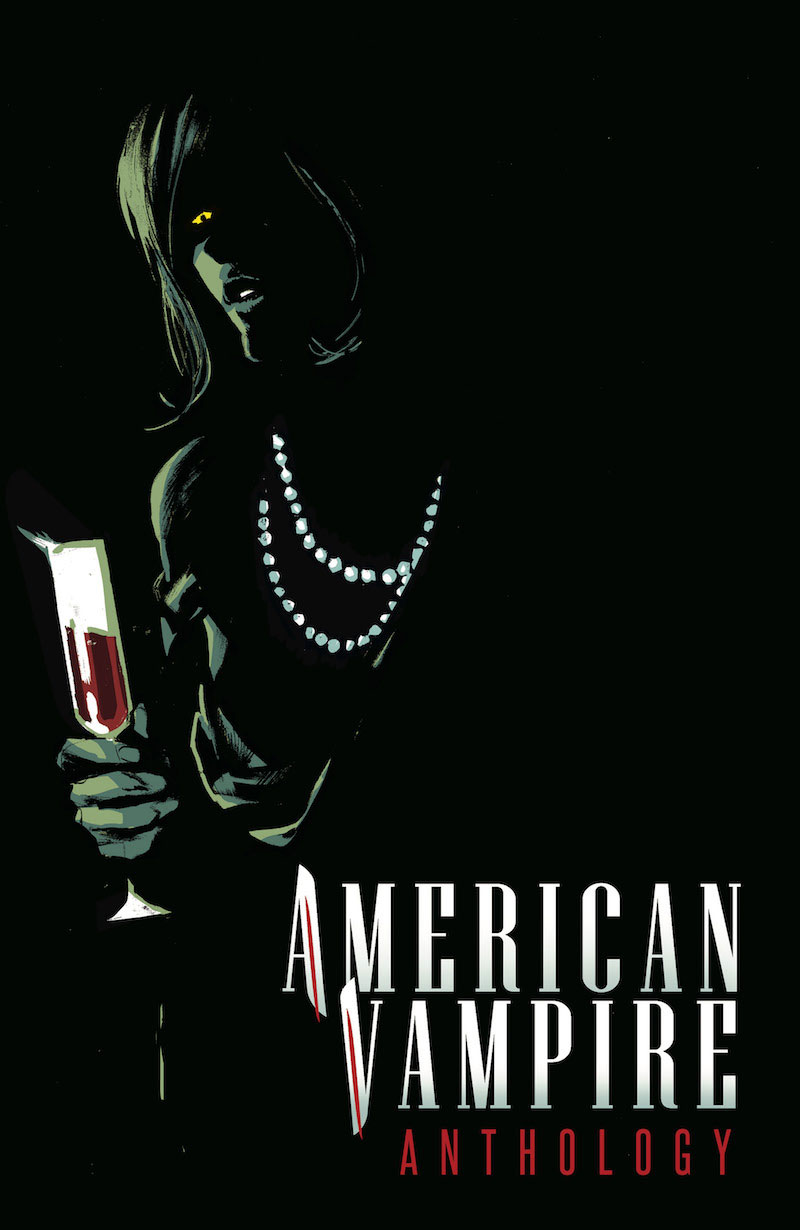R.I.P. Red Room…

The Red Room is dead, long live the Red Room…
I did a lot of stupid things in the Red Room. It’s a bit jaw-dropping to look back and reflect on all the half-assed stunts me and my cohorts pulled off in front of a live, ticket-buying audience—all in the name of downtown theater. To think that we were allowed to do what we did on that stage, that no one stopped us, that we weren’t arrested, that more audience members didn’t walk out on us… That's what made the Red Room the Red Room, with its Lynchian blood red walls and its black corrugated tin ceiling—you could always expect the unspeakable onstage. Sometimes, you even saw some great theater. Sometimes. But it was always raw.
Now the Red Room's dead. Or dying. At the end of March, this 3rd floor stage will go the way of most black boxes here in New York City… dark for good.
“Intimate” would be one way to describe the Red Room. “Shoebox” would be another. Audience participation always went hand-in-hand with the stage, whether the script called for it or not. The main entrance to the theater was actually located right onstage, which usually meant any late-comers or drunken bar patrons looking for the bathroom would make their New York stage debut with whatever show was performing at that given moment.
I first stepped into the Red Room back in the summer of 1999 via the NY International Fringe Festival. I was twenty years old, a rising senior in college, and totally broke—not to mention naïve enough to put on a show in the Big Apple and assume a pre-packaged audience would magically appear the moment the curtain raised. The Fringe assigned companies a venue fitting their show’s needs—which, for us, was the smallest theatre possible in order to spare us the fate of performing to an empty house.
By some fortuitous twist of programming, we were assigned the Red Room.
All in all, probably thirty people saw our show that summer. Most of them fell asleep. But one stayed awake—I think. Erez Ziv is one of the three original founding members of the Horse Trade Theater Group. Horse Trade has taken over a few spaces in the East Village—the Red Room, the Kraine theater, and Under St. Mark’s—and turned them into safe havens for rising theater artists here in New York to throw just about anything they can come up with onstage. From that blisteringly hot August on, he gave our scrappy (emphasis on crappy) company a home to produce our own bizarre blend of theater whenever we were able to whip something up.
Fourteen years later, we still call Horse Trade—and the Red Room—home.
A dissertation could be written about all the different exploits that happened on that stage. It was not uncommon for neighbors to call the police on us with noise complaints. Audience lap dances were par for the course. For one particular show we did back in 2002, we brought in a professional knife thrower to perform ten minutes worth of his standard routine—with actual knives—while his assistant belted out one of our character monologues. The notion of somebody performing a story while being subjected to a barrage of knives, mini-axes and machetes is one thing—but compact that with the fact that this was in the Red Room, the eensie-weensie Red Room, and you come to realize that our audience was in danger. Real danger. Sitting in the front row was a matter of life and death. As fate would have it, a knife nicked this poor assistant in her upper-inner thigh one night—and sure enough, everyone in the theater could see the thinnest trickle of blood come dribbling down her leg. I figured that would the end of us—show’s over, everybody—but that bleeding assistant, bless her, forged ahead and kept performing.
How were we even allowed to do this onstage? Why didn’t anybody stop us?
You can have this conversation with just about any artist who’s poked around off-off-off-off-off-Broadway over the last few years. The numbers of closet spaces, attics and basements that have been renovated into theatres, then closed down and overhauled into bars or American Apparels is endless. Todo Con Nada. Surf Reality. House of Candles. The list goes on. All gone, all footnotes to performers who flagellated themselves before a half dozen folks and will eventually, sadly, be forgotten.
But what separated the Red Room from all the other black boxes, in my mind at least, was the devil-may-care attitude towards its programming. The doors were open to anybody. And I mean anybody. If you had a show, well, the Red Room had a slot for you to fill. Bring us your poor, huddled productions—and more often than not, they did. No other theater around town gave this many undergrads, no-grads, and MFAers their first shot under the fresnels. I saw my fair share of crappy, crappy theater in the Red Room. Hell—I was responsible for my fair share of it. More than my fair share. But I also got to see the very first production by The Debate Society in the Red Room. I got to perform with Daniel Handler (a.k.a Lemony Snicket) in the Red Room. Mike Daisey. But most importantly, I got to create theatre that, regardless of how few people actually saw it, remain personal benchmarks to my own theatrical education onstage.
And I got to work with some very talented people. My hero Hanna Cheek. Zachary Knighton. Max Moore. Jenna Friedenberg. Paul Thureen. Hannah Bos. Isaac Butler. Abe Goldfarb. Hannah Timmons. And more. Too many to name. People who have not only left an indelible impression on me, but on my memory of that space and what it stood for. Most of these performers have moved onto larger venues, onstage or onscreen, but it’s the time we shared in the Red Room that will stick with me forever.
I have been fortunate enough to have worked with some very kind, immensely generous theater people here in New York, but none of them can hold a candle to Erez. His heart has always been bigger than the Red Room, bigger than all three of his theatres combined. That one chamber of his heart is shutting down will only force the others to pump harder. To Erez and Heidi and Shula and everyone else who has kept the Red Room full of life, thank you for letting me be a part of it.
In the dressing room located just off to the side of the stage, there’s a wall that has been overtaken with graffiti scribbled by performers waiting for their entrance. It has always been a rite of passage for young companies to write the name of their show directly above the mirror. I wrote our name up there somewhere back in 1999, or 2000, or 2001… In time, some other young buck wrote his name over ours, and then some other company wrote theirs over his, and so on. All the names have tangled up into a kudzu at this point, the endless din of fifteen years of theatre.
Here’s an obituary for one more black box: The Red Room is dead, long live the Red Room…
P.S. The Red Room is going out with a bang. In March, before closing its doors for good, Horse Trade will host some of the Red Room’s highlights from over ten years worth of productions. We will be performing a double-bill of COMMENCEMENT (with Hanna Cheek) and THE PUMPKIN PIE SHOW (and special guests). We’ll be performing stories that originated in the Red Room, so please come pay your respects to one of the rawest black boxes in NYC.
January 28, 2013
Related: The Pumpkin Pie ShowLeave a Comment
“A deeply eerie and evocative portrayal of what it's like to stare into the abyss and find something there waiting for you. A memorable, disquieting ghost story about stories, rendered inside a Möbius strip.”
— Kirkus
